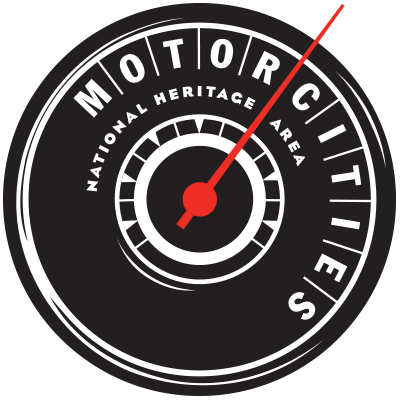By Robert Tate, Award-Winning Automotive Historian and Researcher
Images Courtesy of Stellantis Chrysler Archives, Heacock Classic, The Robert Tate Collection
Published 5.14.2025
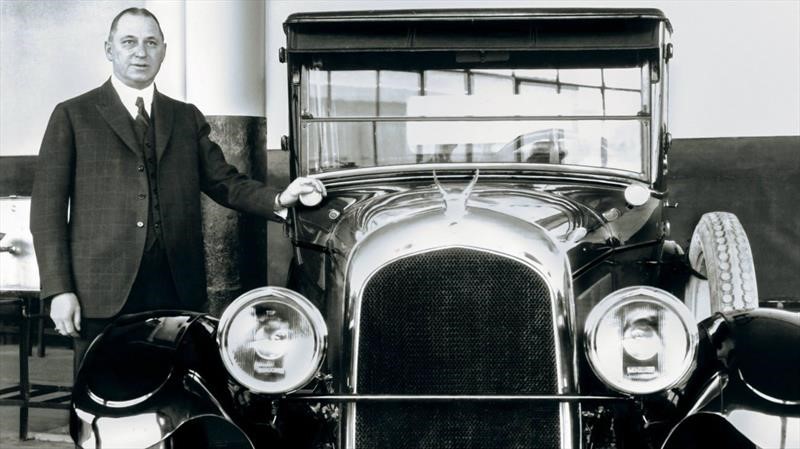 Walter Chrysler with his 1924 Chrysler Six model (Stellantis Chrysler Archives)
Walter Chrysler with his 1924 Chrysler Six model (Stellantis Chrysler Archives)
Stellantis has announced that Chrysler will mark 100 years on June 6, 2025, and they will be introducing its centennial celebration at the New York International Auto Show with a three-vehicle display showcasing the brand’s iconic past.
In the beginning, there was a young man who was a genius for mechanics and for making things work. His name was Walter P. Chrysler. He attended his first show and introduced the first 1924 Chrysler Six models at the New York City automobile show, which took place in the lobby of the Commodore Hotel. The Chrysler Six model was the brainchild of the creative engineering trio of Fred Zeder, Owen Skelton and Carl Breer. Some automotive historians have said that the 1924 Chrysler models were so successful that they were carried on through 1925 with very little revision.
 A 1929 DeSoto Six Roadster (Stellantis Chrysler Archives)
A 1929 DeSoto Six Roadster (Stellantis Chrysler Archives)
On June 6, 1925, Maxwell Motors Corporation, of which Walter P. Chrysler was board chairman and which had been marketing the new Chrysler Six, voluntarily transferred its business and physical properties to a new company established as the Chrysler Corporation. In 1928, Dodge became a part of Chrysler in $170 million exchange of stock. Plymouth, along with DeSoto, became additional brands under the Chrysler umbrella in 1928.
In 1934, Chrysler introduced the Airflow (1934-1937), a car that introduced a revolutionary aerodynamic design that most consumers did not enjoy with its waterfall grilles, head lamps, and fenders that were merged into one continuous form. In 1936, Chrysler manufactured more than 1,000,000 automobiles and trucks. During World War II, over a half a million Dodge trucks were produced for the armed services, along with many Detroit tank arsenal products. After the war, Chrysler resumed manufacturing automobiles.
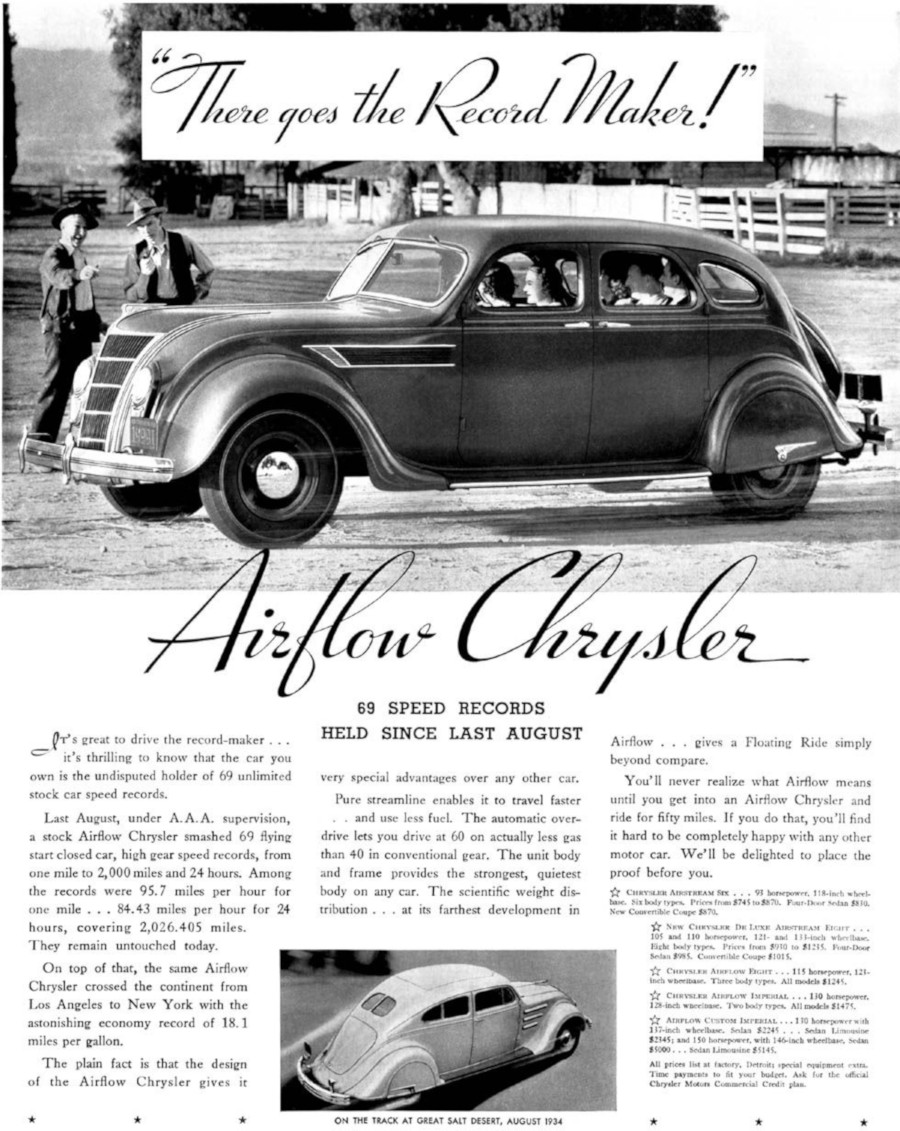 A Chrysler Airflow ad (Robert Tate Collection)
A Chrysler Airflow ad (Robert Tate Collection)
In 1951, the Chrysler FirePower/Hemi engine quickly became known as the very popular Hemi engine recognized as one of the most powerful engines in automotive history. In 1954, a driver took the NASCAR championship in a Chrysler, which was admired by enthusiasts around the world. In 1955, Chrysler introduced the popular 300 models, which became very successful.
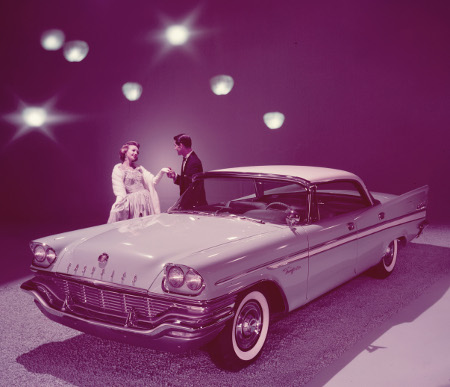 A 1957 Chrysler
A 1957 Chrysler
Also during the 1950s, under the direction of President K.T. Keller, Chrysler’s cars emphasized engineering and style. In 1949, Keller hired Virgil Exner, who became Chrysler’s first vice president of styling. Exner created a new look for Chrysler in the 1950s with the “Forward Look.” The 1957 Chryslers and their other brand offerings were great-looking cars that the public really enjoyed. The 1957 Plymouth, with its great styling, took over the third spot in auto industry sales, passing General Motors’ Buick brand.
 A 1968 Dodge Charger ad (Robert Tate Collection)
A 1968 Dodge Charger ad (Robert Tate Collection)
The 1960s brought a decade of change, with the 1963 Chrysler Turbine and the beginnings of popular muscle cars. The stylish 1968 Dodge Charger, along with the Plymouth Road Runner, became very popular with younger drivers.
Under the design influence of Elwood Engel, Chrysler introduced many popular 1960s and 1970s muscle cars. The colors were wild, and the names represented a great era in muscle car design. The Plymouth advertising campaign used the Warner Brothers “Road Runner” animated bird during the 1960s and 1970s.
 The 1970 Plymouth Superbird Rear Wing Feature (Heacock.com)
The 1970 Plymouth Superbird Rear Wing Feature (Heacock.com)
In the 1970s, the Organization of Petroleum Exporting Countries (OPEC) declared an embargo on oil exports to many nations that led to an “oil crisis” in the United States that dramatically impacted the automakers and consumers. Chrysler began to market compact cars from small automakers like Japan’s Mitsubishi under the Dodge Colt name. In 1978, Chrysler introduced the mid-size LeBaron and the first U.S. subcompacts, the Dodge Omni and Plymouth Horizon models.
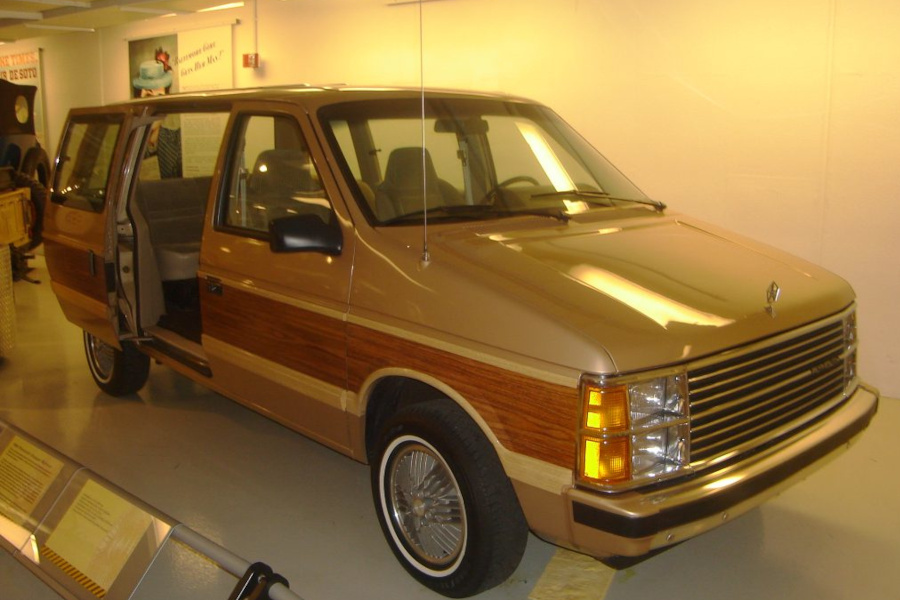 The Plymouth Voyager, first minivan (Stellantis Chrysler Archives)
The Plymouth Voyager, first minivan (Stellantis Chrysler Archives)
Despite pivoting to making more smaller cars during the 1970s, Chrysler’s financial situation was deteriorating rapidly. New Chairman and CEO Lee Iacocca teamed with Chrysler President Gerald Greenwald and the United Auto Workers to obtain a federal loan to help save the company. Lee Iacocca said, “The K-Car was the last train from the station. If we failed here, it was all over.” The K-Cars, marketed as the Dodge Aries and the Plymouth Reliant, helped save Chrysler Corporation.
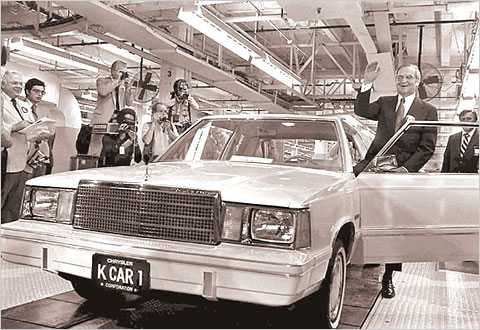 Lee Iacocca with a K-Car (Stellantis Chrysler Archives)
Lee Iacocca with a K-Car (Stellantis Chrysler Archives)
In 1983, Chrysler introduced the popular 1984 Plymouth Voyager minivan, which became one of the greatest sellers in the company’s history.
In 1998, the Chrysler Corporation and Germany’s Daimler Benz merged in an exchange of shares, forming DaimlerChrysler AG.
Bibliography
Chrysler Corporation. “Chrysler Through the Years.” 1996.
Chrysler Corporation. “The First 30 Years of Progress.”
Chrysler Corporation. “A Pictorial History of Chrysler Corporation.” 1966.
Dammann, George H. “70 Years of Chrysler.“ Crestline Publishing, 1974.
